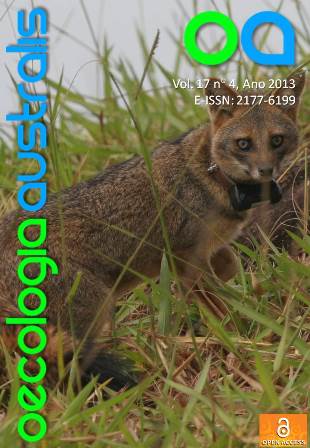BIODIVERSITY SURROGATES: FUNCIONALITY AND LIMITATIONS
Keywords:
bioindicadores, congruência, conservação, hotspot, riquezaAbstract
As a consequence of the enormous complexity of ecosystems, and of the limited availability of resources, conservation
biologists have looked for appropriate approaches to predict the overall diversity of an environment, without the need to
individually know the diversity of each organisms group on a given area. This paper presents a review of studies on
biodiversity surrogates, particularly the two types more discussed in literature: bioindicator taxa and higher taxa approach.
Several studies have shown that diversity measures (eg, species richness, evenness, and species composition) exhibit little
or no correlation among different organism groups. This has raised to many doubts about the validity of the use of biodiversity
surrogates. It is known that correlation between diversity measures is influenced by the statistical method applied, by
temporal scales, by the sampling effort, and by the habitat type. However, those factors have been overlooked in several
studies. To date, there are no sufficient subsidies to define any organisms group as an unconditional biodiversity surrogate
of others, or even as a measurable subset of regional diversity. However, this is a line of research relatively new, therefore
it is still worth exploring the biodiversity surrogates, addressing new diversity measures within well-defined spatial scales,
attempting to find an alternative which enables their application on the establishment of protected areas.


